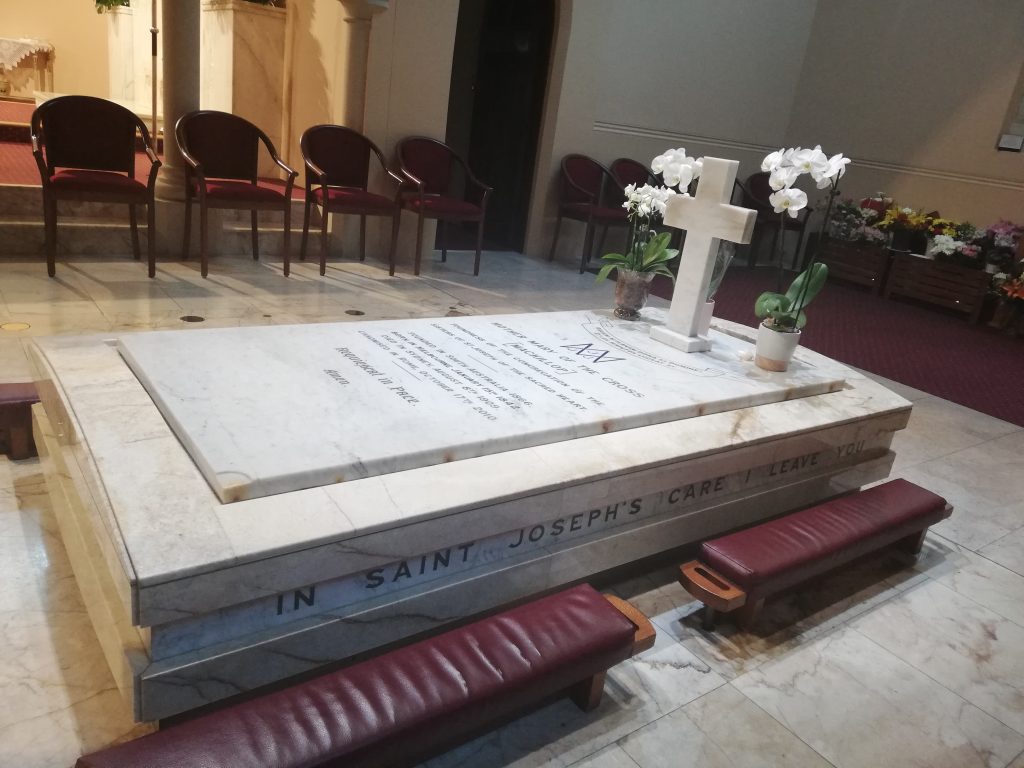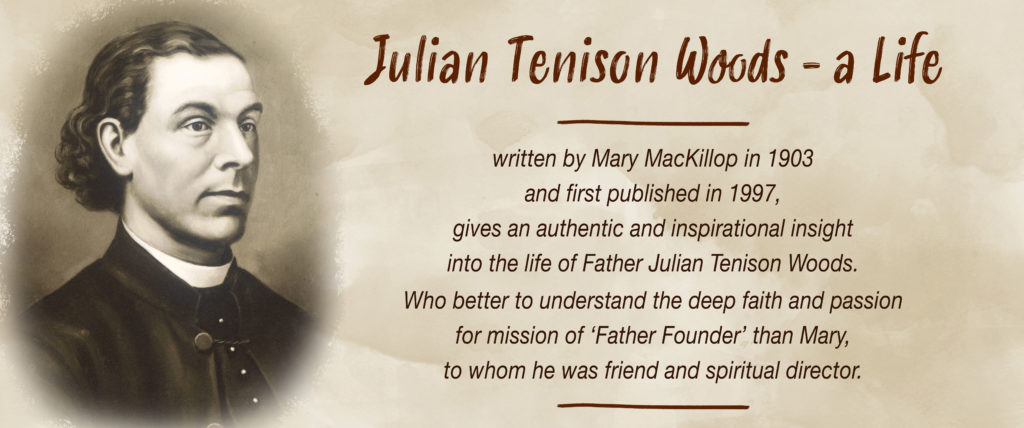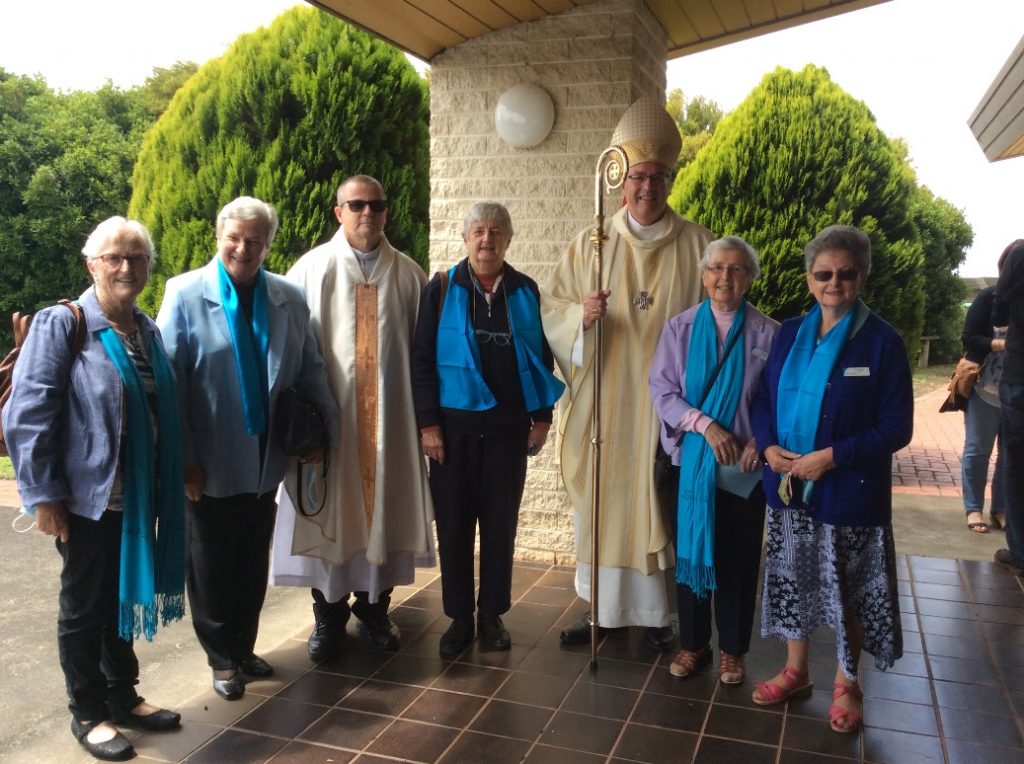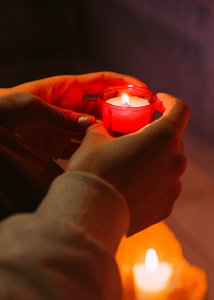Reflection on Mary MacKillop
February 8, 2021
In his Apostolic Letter With a Father’s Heart (Patris Corde) Pope Francis has proclaimed this year as the Year of St Joseph.
In writing, Francis describes St Joseph “as a beloved father, a tender and loving father, an obedient father, an accepting father, a father who is creatively courageous, a working father, a father in the shadows.”
Mary MacKillop must be rejoicing and acclaiming Pope Francis from her Godly surroundings on such a profoundly wise and appropriate declaration of our patron St Joseph!
Julian Tenison Woods: A Life – Chapters 27th to 35th
February 7, 2021
Chapters 27th to 35th
There was great joy among the Sisters in Brisbane when, on 5th January [1872] their dear Father Founder arrived; yet they were saddened by his worn and haggard appearance.….The following day, he began a retreat for the Sisters, which occupied five days….[1]
The Holy See commissioned two prelates to enquire into the controversies that had arisen [in Adelaide.…It now became necessary for Father Woods to return to Adelaide and he left Sydney on the 8th of June … after an absence of eleven months… [2]
Waitangi Day
February 6, 2021The Waitangi Day Act 1960 declared 6 February to be Waitangi Day
Waitangi Day is a national holiday of thanksgiving in commemoration of the signing of the Treaty of Waitangi. The Treaty is regarded by some Māori as ‘He Taonga Tapu’, a sacred covenant, a bond with spiritual connotations between peoples, involving obligations on both sides. The relationship between Māori and the Crown has been described by Sr Makareta Tawaroa rsj, Nga Paerangi, as similar to Lazarus and Dives. (Luke 16: 19-21)
Aotearoa has been occupied by Māori for a very long time and the ancestors worked out ways to integrate relationships with Papatuanuku, (Earth) and all peoples. By 1800, regular trading visits by Europeans led to the first tiny coastal settlements of whalers, sealers and traders, under the protection of local hapū [a number of whānau (extended families), the most significant political unit in Māori society]. By 1840, the Māori population had reached 80,000. The Settler population was about 2,000.
Wonthaggi Parish farewells the Sisters of Saint Joseph
February 4, 2021
In 1912, Sisters Irene, Julian, Gerard, Everilda and Carmen arrived in Wonthaggi to staff the new parish school built by Fr O’Sullivan and volunteers.
As the convent had not yet been built, Fr O’Sullivan slept in the sacristy of the Church while the sisters were accommodated in his presbytery. Thus began a 108 year relationship with the sisters and the Parish of Wonthaggi.
International Day of Prayer, Reflection and Action Against Human Trafficking
February 2, 2021 Pope Francis has declared the feast of Saint Josephine Bakhita on 8 February as the International Day of Prayer, Reflection and Action against Human Trafficking.
Pope Francis has declared the feast of Saint Josephine Bakhita on 8 February as the International Day of Prayer, Reflection and Action against Human Trafficking.
Born in Southern Sudan in 1869, St Josephine Bakhita was kidnapped and sold twice into slavery. After gaining her freedom, she dedicated her life to sharing her story and supporting the poor and suffering. Eventually, she became a Catholic and a Canossian Sister. In 2000 she was canonised and she is the patron saint of Trafficked People.
To mark this year’s International Day, Australian Catholic Religious Against Trafficking in Humans (ACRATH) will be part of a special seven-hour Marathon of Prayer moving around the globe. Pope Francis will address us and join us with a prayer at 11:30pm AEDT.
World Day for Consecrated Life
 Each year the Church sets aside 2 February, the feast of the Presentation of the Lord, as a day dedicated to the celebration of consecrated life.
Each year the Church sets aside 2 February, the feast of the Presentation of the Lord, as a day dedicated to the celebration of consecrated life.
The choice of this day for the commemoration is deliberate as the feast celebrates both waiting in hope and the encounter with Jesus.
On this day, Jesus was brought to the Temple where Mary and Joseph were met by Anna and Simeon, who had spent their lifetime in prayer and fasting, waiting and longing for a Messiah. For these faith-filled elders, this encounter was the fulfillment of God’s long-awaited promise. Luke tells us that Simeon took Jesus into his arms and broke into joyful praise, while Anna not only breaks into praise but begins to “speak about the child to all who were looking for the redemption of Jerusalem.” (Lk 2:38)
The consecrated life is one that mirrors this response as those who have encountered the Christ in their own lives seek to give witness to that encounter through lives of prayer and service.
Celebrating Australia Day 2021
January 26, 2021
Theme: Reflect, Respect, Celebrate
In 2020, the National Australia Day Council launched a new campaign that calls upon all Australians to reflect, respect and celebrate on Australia Day. According to the National Australia Day Council:
International Education Day 2021
January 25, 2021
Recover and Revitalise Education for the COVID-19 Generation
This year, the third International Education Day will be celebrated on 25 January (usually celebrated 24 January). In the wake of the COVID-19 pandemic, affecting the lives of 1.6 billion students in over 190 countries, UNESCO chose for its theme the challenging task: Recover and Revitalise Education for the COVID-19 Generation.
I see the United Nations as a great symbol of hope in our divided world, an entity that proves we humans, for all our differences, can work in solidarity to achieve common goals. COVID-19 has shown that our governments and other organisations are getting proficient at working together in partnerships and protecting the outcomes.
